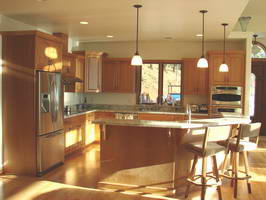Electrical Applications for Inverters
 '; ';
|
Would it be wise to run an inverter off a battery and the fridge at 220vac off the car battery or would it be better to just run it straight off the 12vdc… © By: Dave Rongey |
Make Sure The Power Specifications Match To Avoid Problems
[ad#block]Question: Take an average portable fridge that one would use for camping. It can run off 12Vdc/220Vac. Would it be wise to run an inverter off a battery and the fridge at 220vac off the car battery or would it be better to just run it straight off the 12V( Assuming all wiring, fuses and etc have been made to handle the current). Basically, fridge/freezers are double the price when it can run of either voltage, so I want to know if I can just buy the 220Vac one and then use an inverter while we only have the car to power it?
This electrical question came from: Rowan, a Student from Pietermaritzburg, South Africa
Additional Comments: Enjoy the facilities a lot.
Dave’s Reply:
Thanks for your electrical question Rowan.
Rowan, I’m assuming your using a 220vac fridge there in South Africa, so you will need to match the inverter to the fridge power specs, but most of all you need to make sure that the fridge manufacturer approves of the inverter for the fridge so the unit will not be damaged. The problem is when the compressor starts it will have a momentary inrush of current that will be required and if the inverter is not large enough both units could be damaged. Check the fridge and see exactly which voltage it requires and what amount of watts of amps will be required.
The Following links will assist you with your electrical question:
The following may also be helpful for you:
Be Careful and Be Safe - Never Work on Energized Circuits!
Consult your Local Building Department about Permits and Inspections for all Electric Wiring Projects.
More articles about Electrical and Home Electrical Wiring: |
|
| « Previous | Next » |
Bayonet Style Energy Efficient Bulb Problem |
How to Discharge a Motor Capacitor |













